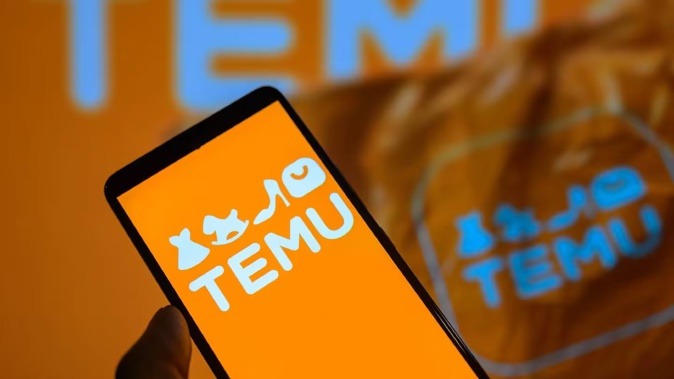
By Susan Edmunds of RNZ
About a million New Zealanders say they have purchased something from Temu – and the rise of the retail platform is forcing some local shops to rethink how they do business.
A new survey by Tearfund New Zealand showed 25% of New Zealand adults said they had shopped from Temu.
Another 14% said they had bought something from Shein.
“We have seen a huge increase,” said Tearfund fashion industry researcher Claire Gray.
“We are seeing it skyrocket. It makes perfect sense, we are really feeling the squeeze financially so of course you look for cheaper options for things to buy.”
She pointed to GDP data which showed growth in imports of low-value goods, reflecting the impact of the platform.
Premium: All Of Viva’s Sustainable Fashion Coverage From 2024
However, there are concerns some of the items sold on Temu and similar platforms are priced too low for those involved in the manufacture to be treated fairly.
“Given the significant amount of work it takes to make a T-shirt, and the multiple people involved, these retailers’ prices are a giant red flag that workers are being exploited,” Gray said.
She said it made it hard for retailers who were “trying to do the right thing” to be profitable.
“How do you compete with Temu? It’s really challenging.”
Temu received a zero in the Baptist World Aid Ethical Fashion Report, which was released on Thursday. Shein received 20. The average score was 30.
In 2022, Boohoo scored 24, Cotton On 42, Nike 50 and Decjuba 16.
Gray said Temu’s score was a reflection of a lack of transparency.
“Without transparency, consumers have no way of knowing whether a brand is doing what’s possible to ensure the welfare of their workers,” she said.
Tearfund fashion industry researcher Claire Gray said Temu's practices made it hard for retailers who were 'trying to do the right thing' to be profitable. Photo / Alex Burton
A Temu spokesperson said it connected shoppers with third-party merchants.
“Our competitive prices result from streamlining the supply chain and eliminating middlemen.
“Many traditional retailers and platforms rely on middlemen to source products from the same manufacturers that sell on Temu. With our direct-from-factory model, consumers avoid paying the added intermediary costs and mark-up,” they added.
“Temu is committed to upholding ethical, humane, and lawful business practices, as outlined in our Third-Party Code of Conduct. Our business partners and third-party merchants must comply with strict standards regarding labour, safety, and environmental protection. We reserve the right to end relationships with those who do not meet these requirements.”
Retail NZ chief executive Carolyn Young said people who shopped at Temu tended to do so frequently.
“Right now, people are looking for bargains, something that’s fit for purpose and budget. It’s definitely harder to compete.”
She said retailers in the same price point faced significantly more competition.
“It’s a global international player able to manufacture and distribute straight from the source, that’s much cheaper than a New Zealand retailer who has a bricks and mortar store displaying items, manufacturing and transporting them.
“There’s a whole lot more that goes into it when you’re in situ rather than when you’re a long way overseas marketing to a global economy.”
She said there was also pressure because New Zealanders were still watching their spending.
The average amount that people were spending was still dropping, she said.
“The price point at sale is much lower than it has been. When [shops] have specials and sales on, especially if it’s a spend-and-save it’s not getting traction because people are not buying a second item unless they absolutely need to.”
She said shops trying to compete with the likes of Temu needed to think about their point of difference.
“Why would customers come to see you? It’s about understanding your market and your customer being able to segment out your market and target advertising to them specifically.
“In 2024 it’s much easier to do that segmentation and do marketing campaigns to specific people.”
She said shops should also ensure they had a good website and make a point of highlighting the fact they were from New Zealand.
“You’re a New Zealand retailer, you’re here, you’re present, you’re able to be contacted and people can go and see the store. That will definitely matter to some people. Making sure you reiterate that sort of thing through your promo is really important.”
But she said if it was not Temu bringing competition, it would be something else.
“We all have to consider how to remain relevant and marketable to consumers. You can never stand still like we would have done 20 years ago prior to technology.”
Gray said it was not surprising cheaper shopping options appealed to people in difficult financial times.
“My advice would be if you can afford to, stop. If you can’t afford to, think twice about whether you really need the item before adding to cart.
“It’s not up to consumers to solve the issue of exploitation in the fashion industry – we need both the Government and fashion companies to step up and take greater action.
“However, one of the most impactful actions we can take to disrupt the ultra-fast fashion system is to reduce our demand,” Gray said.
“By limiting the number of new clothing items we’re buying we send a strong signal to brands that we no longer want to participate in a system where another person is paying the price of our cheap T-shirt.”
-RNZ
Take your Radio, Podcasts and Music with you









